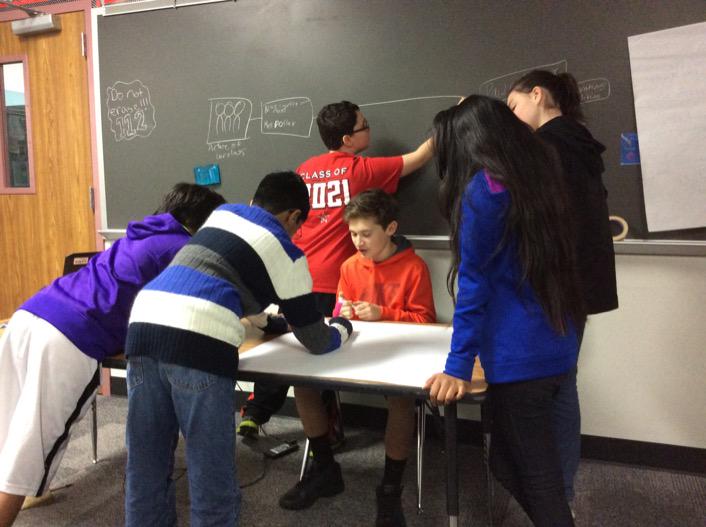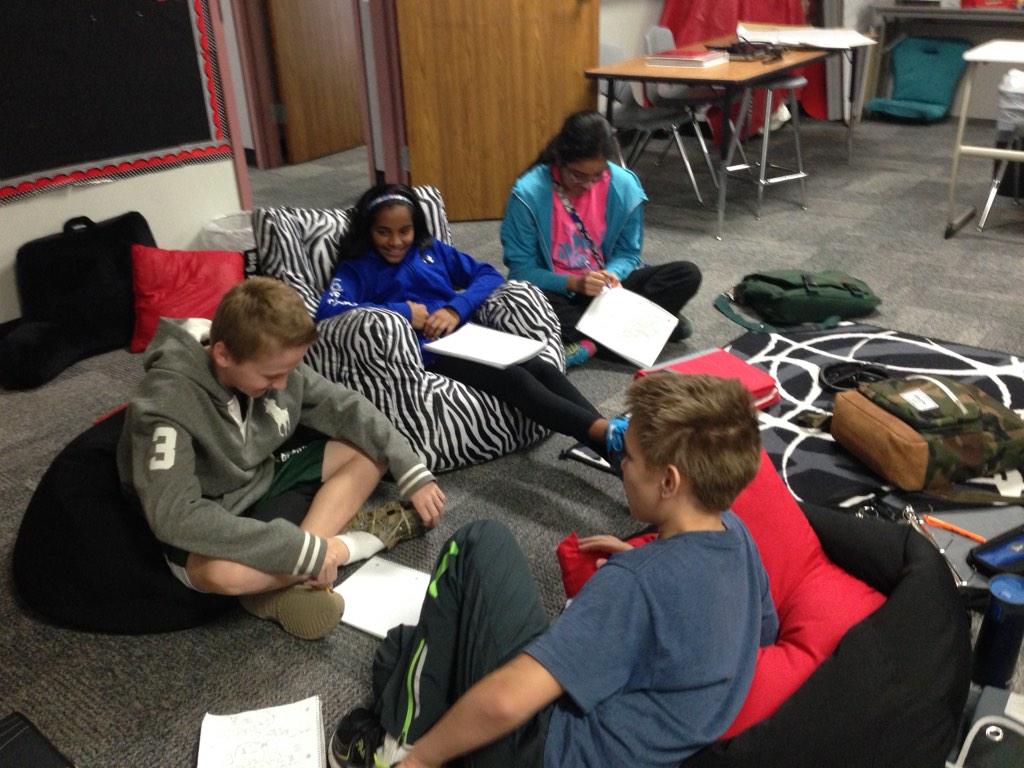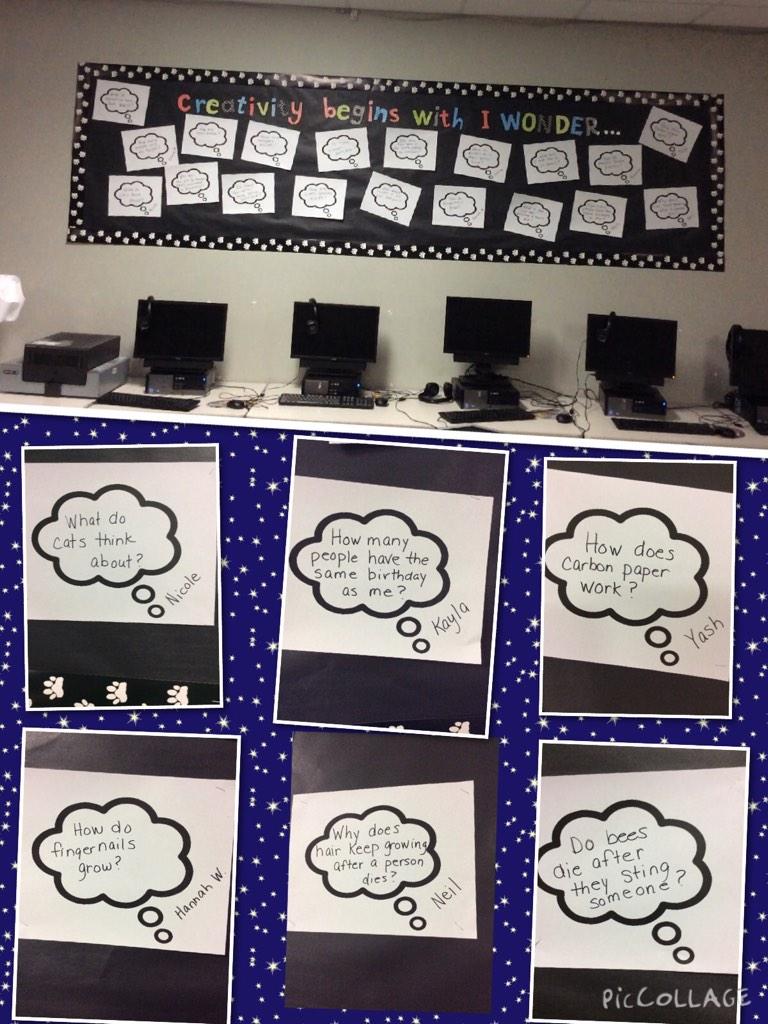Nowadays it seems like technology is everywhere. I can walk into a restaurant, place my food order, play a game of Solitaire, pay for my meal (and even tip) by using a Kiosk. Except for a person who shows me and my family where to sit down and a person who brings our food to the table, my experience is virtual.
 |
| teacher drone |
I confess that I have feared on more than one occasion that I would be replaced by a robot or drone. But until that happens I purpose to infuse technology into class experiences whenever possible. Which brings me back to the focus of this blog...
So what happens when your campus Wifi shuts down on the day you have the BEST technology infused lesson plan and your campus evaluator is planning on seeing your genius manifested?Ugg! You can have them come back another day. You can also have plan B ready, especially when your school's Wifi doesn't comply.
1. Cursive Handwriting
Advantages: free app; doesn't require internet; personalized instruction; purposeful learning; appropriate for secondary grades.
 |
This is a little known app that teaches students how to write their name in cursive. We can't assume our students know how to do so even at the high school level.
If you don't believe me, pass around a piece of paper and ask your students to write their names in cursive. Explain that writing their name in cursive is required to do so on important documents, like contracts.
You'll be shocked how many future doctors are sitting in your class because their signature will be unreadable!
2. Little Writer: Tracing App for Kids
Advantages: free app; doesn't require internet; improves fine motor skills; practice tracing and writing.
Disadvantages: may not hold student's attention; requires lowest level of thinking; is an electronic worksheet.
Teaching the basics of handwriting is fundamental to written expression. Until keyboarding has entirely taken over, there is a time and place for manuscript writing. However, iPad writing doesn't replace the good ol' number two pencil and writer's notebook!
3. Quiver 3D Coloring (formally known as ColAr Mix)
Advantages; free app; does not require internet; free color pages; highly engaging; integrates well into reading and writing workshop; fun for all ages!
 |
| Photo from ColArmix.com #sharkday |
If you are unfamiliar with this 3D app, it will blow your mind! After running off color sheets, students can color and create stories to go along with their 3D images that come to life.
I've witnessed reluctant writers collaborate to create stories about their pictures and then share out with other students. This is creativity and innovation at its best!
If you are looking for a global experience, I encourage you to check out International Dot Day. Most likely your school or community librarian has heard of this experience and can hook you up with the book, The Dot by Peter Reynolds. There are endless activities such as Skype sessions to connect you and your students to a global audience.
More information and classroom ideas for 3D coloring can be found at these blog sites:
The Techie Teachers Blog
Lore's Latest Links
Cool Cat Teacher
Watch this ColAr Mix demonstration
4.Stop Motion
Disadvantages: Lego pieces can go missing; Play do can end up on carpet or the floor; teacher esteem my go down a notch after watching children as young as ten-years-old create stop motion videos in less than an hour.
This is a perfect application for students who like to figure out how things work and enjoy manipulating props. I had a class of sixth graders who created some very cool projects this year by simply playing around with the app and watching a couple of "how to" videos on Google.
Here are a couple to check out:
Earth Day Video This video was created for an Earth Day project using Play dough and Stop Motion.
The 3 R's: Recycle, Reuse, Reduce This video was created for a unit on Recycling using Legos and Stop Motion.
Side Note: Not every student will enjoy this project because it requires patience and multi-steps. I was surprised when a group of eighth grade girls who had been knee deep in end-of-the-year drama stories, play like children when given play dough and cookie cutters. Sometimes I think it's okay to let our students "just play" regardless of their ages.
5. Sock Puppet

Advantages: free app; doesn't require internet; user friendly; collaborative; easy to manipulate.
Disadvantages: limited to 60 seconds of talk; best if uploaded to You Tube (which requires internet).
This year I worked with a Science teacher to modify an assignment for a student using Sock Puppet. Instead of writing a "how to" essay on lab safety, the student created a sock puppet show on the importance of using goggles during an experiment. Click here to view: Hannah's Safety Goggle Project
Students/teachers can create puppet shows to:
- Explain a science concept.
- Retell a story.
- Tell about an event from history.
- Share information about a famous person.
- Model appropriate social behavior.
- Tell jokes. (Knock-knock jokes work well!)
- This is a clip of a book review for Amelia Bedelia.
Confession Reflection:
What are some advantages to integrating technology into lesson design? What are some disadvantages?
How can we encourage teachers who are "technology resisters" to embrace technology? What are some baby steps they can take?
Who are your technology "go to" people on your campus or in your district to help you design meaningful lessons?
What is one new iPad app you will try this coming year with your students?




















